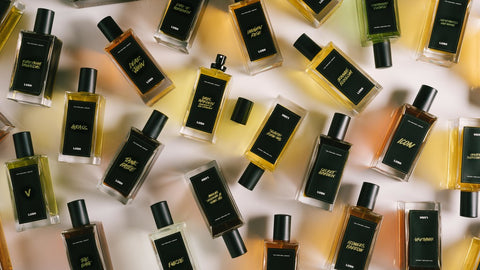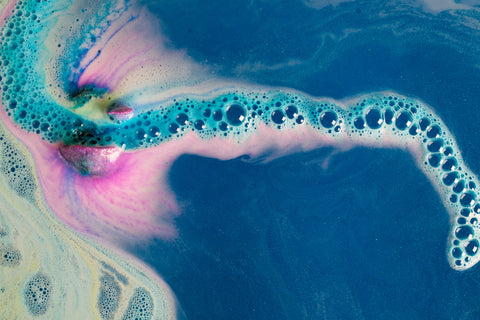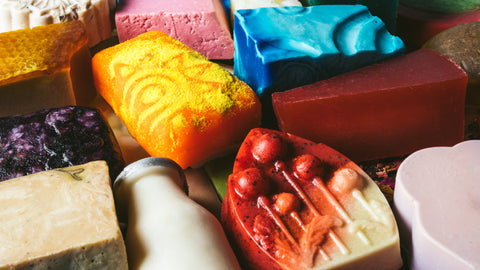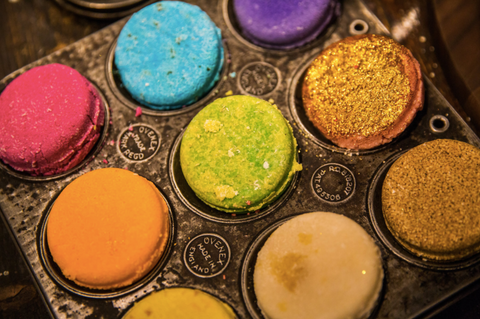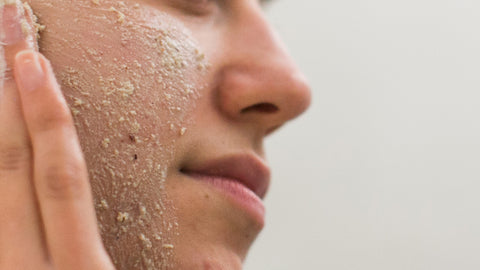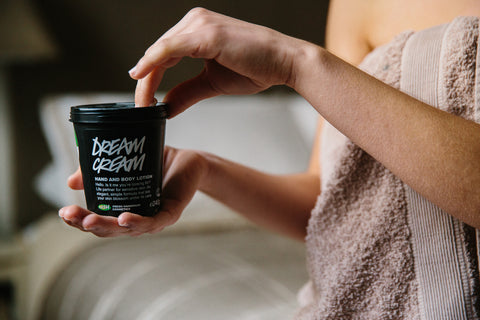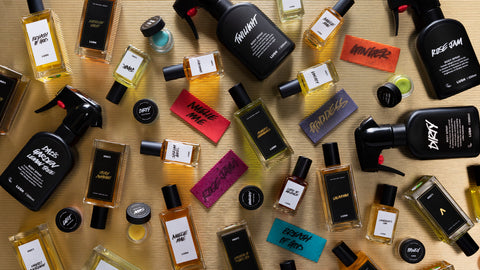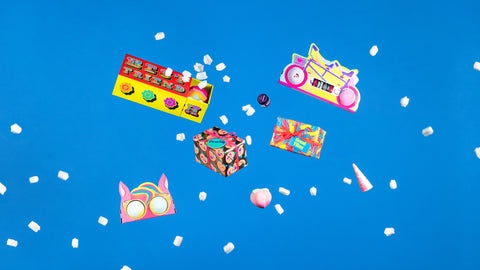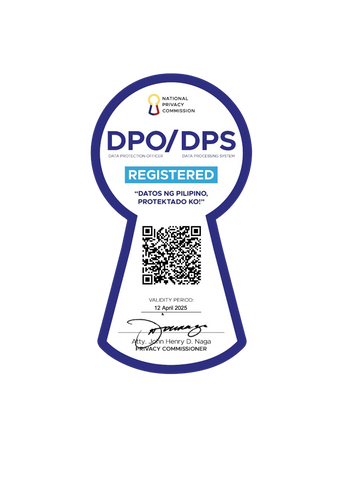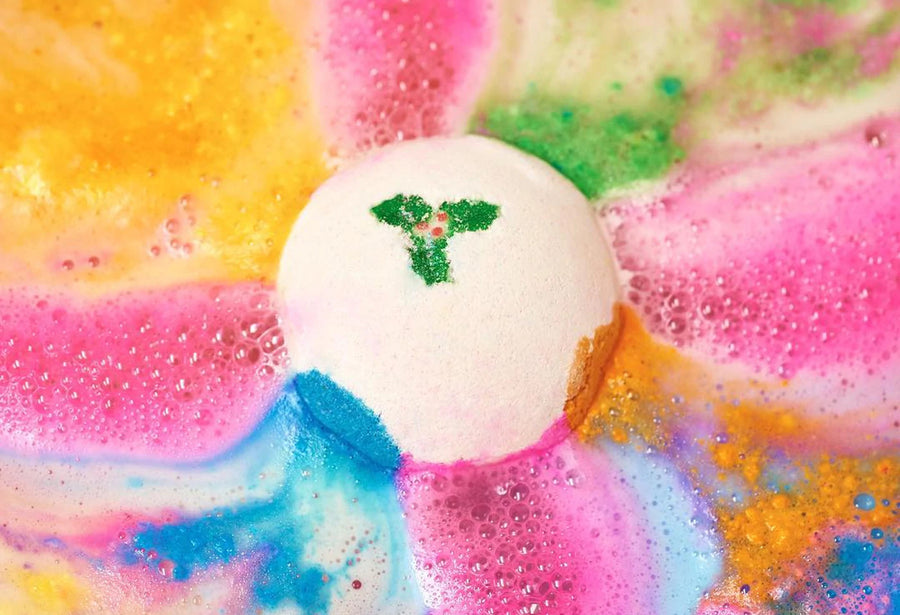Subtotal: 0.00 PHP

Not stopped knot wrapping for ten years
It’s been a decade since Lush launched Knot Wraps, and you started embracing those beautiful squares of fabric as scarves, bags, and reusable wrapping paper. But just how did it all begin, and what’s happened in ten years?
It started with vintage scarves. Maria from the Lush buying team poured through bundles of vibrant fabrics, scrutinising them to see if they matched her tough criteria. No transparent scarves, no wool, no silk, no damage, no logos, and absolutely no hunting scenes - it turned out there were quite a lot of these around.
It wasn’t easy. Maria only managed to find around 100 scarves a day that passed the test, and with a Christmas launch coming up, that wasn’t going to cut it.
“I thought that if we used vintage, we’d be upcycling, and we’d also have loads of different designs. Then it was a case of - how do we do this?” Maria says.
Finally, Maria found a supplier in the north of England that could handle the quantities, and she stocked up with 40,000 vintage Knot Wraps for Lush’s first venture into knot wrapping in 2009. Since then, 47,000 kilograms of vintage scarves have been upcycled - that’s the equivalent weight of eight elephants.
Why Knot Wrap?
As long as Knot Wraps are used again and again, they can replace plenty of single-use items or pieces of disposable packaging, and become an essential piece of kit for the reduce, reuse, recycler. Need an extra shopping bag? Want to jazz up your ‘do? Got a gift to wrap? There’s a Knot Wrap for all of that. It’s one of the ways we’re turning the packaging industry on its head, and finding regenerative ways of wrapping. A Knot Wrap might make a snazzy piece of gift wrap, or even a gift in itself, but there’s even more to it than that. The lucky recipient might choose to pass their Knot Wrap forward the next time they’ve got a gift to wrap, and be a part of making gifting planet-friendly.
Lush has now been knot wrapping for ten years, but the concept has been around for centuries, starting with the Japanese art of furoshiki.
Chiemi Kurosawa from the Lush Japan buying team says: “Before Knot Wraps, and even before furoshiki, these fabrics were a popular, very common type of packaging in Japan. The fabric is very light, and it’s also quite strong and washable. You can change its shape to anything.”
Furoshiki has a long history in Japan, and there are many stories describing how it all started. Chiemi explains that in one of those stories, the term furoshiki, meaning “bath spread,'' came about in the 1600s when people wrapped their clothes in pieces of fabric at bath houses. To begin with, the designs were all the same, which caused quite a few mix-ups when the wrong bundles of clothes were picked up. People started to create their own designs and family symbols, and the patterns on the fabric began to diversify.
The way the fabrics are used hasn’t changed much in that time, but the designs certainly have.
Ten years and counting
From those vintage scarves in 2009, Knot Wraps at Lush have come a long way. Pretty soon after the vintage Knot Wrap release, the relationship that we’d been building with re-wrap, a non-profit organisation in India, began to flourish. Lush began creating designs, and re-wrap produced them as 100% organic cotton Knot Wraps, while also striving for social and environmental change and empowering female artisans. Every part of the Knot Wrap production is accounted for, and the cotton is grown in India using organic practices.
Ten years later, we’re still stocking stores with beautiful vintage prints and wraps handmade by re-wrap. But we’ve also gone further. An additional group in India now produces organic cotton Knot Wraps, and in Japan cotton comes from a project in Fukushima, which rejects pesticides and GMO seeds, and is helping to regenerate land and livelihoods in the region.
Other Knot Wraps are made from recycled plastic bottles, which are washed, crushed, and chipped, then melted and spun into yarn. So far, this has saved 66,000 kilos of plastic from going into landfill - the equivalent weight of around 150 polar bears.
In ten years of knot wrapping, there have also been plenty of artist collaborations. Take Arthouse Unlimited, a charity that represents and supports artists who live with learning and physical difficulties. They’ve designed many Knot Wraps for Lush over the years, including the Turtle Power Knot Wrap, designed to highlight the impact that single-use plastic has on our oceans and marine wildlife.
It’s been a busy ten years of knot wrapping. Who knows what exciting developments could be around the corner…
Ready to wrap? Take a look at our Knot Wraps online, or pop into your nearest store to see more vintage designs.
